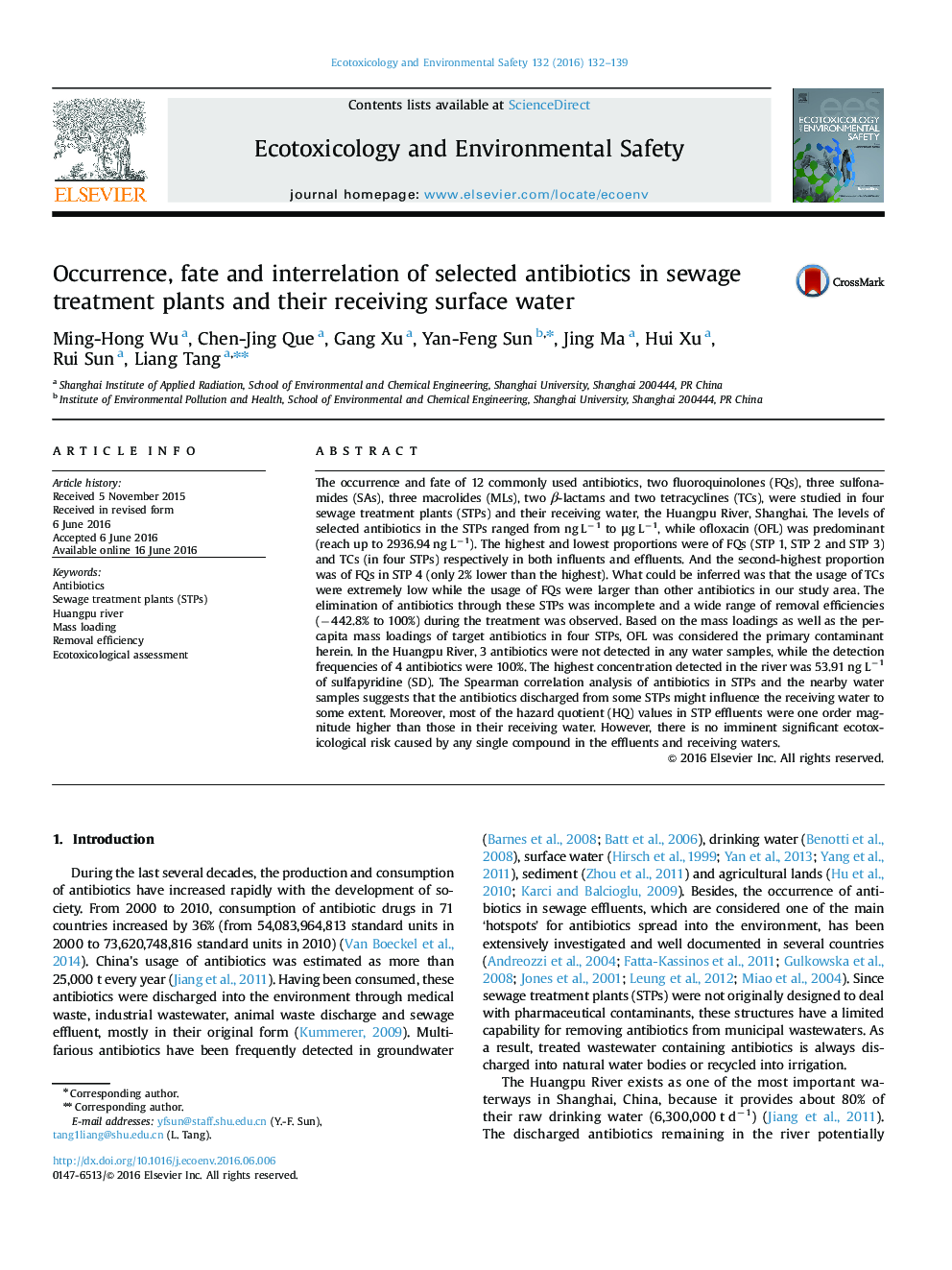| کد مقاله | کد نشریه | سال انتشار | مقاله انگلیسی | نسخه تمام متن |
|---|---|---|---|---|
| 4419097 | 1618931 | 2016 | 8 صفحه PDF | دانلود رایگان |
• Four categories of selected antibiotics were investigated in STPs and their receiving water.
• OFL was considered to be the primary contaminant.
• The potential correlations of antibiotics between STPs and nearby waters were analyzed.
• The ecotoxicological risks were evaluated as relatively low at the present stage.
The occurrence and fate of 12 commonly used antibiotics, two fluoroquinolones (FQs), three sulfonamides (SAs), three macrolides (MLs), two β-lactams and two tetracyclines (TCs), were studied in four sewage treatment plants (STPs) and their receiving water, the Huangpu River, Shanghai. The levels of selected antibiotics in the STPs ranged from ng L−1 to μg L−1, while ofloxacin (OFL) was predominant (reach up to 2936.94 ng L−1). The highest and lowest proportions were of FQs (STP 1, STP 2 and STP 3) and TCs (in four STPs) respectively in both influents and effluents. And the second-highest proportion was of FQs in STP 4 (only 2% lower than the highest). What could be inferred was that the usage of TCs were extremely low while the usage of FQs were larger than other antibiotics in our study area. The elimination of antibiotics through these STPs was incomplete and a wide range of removal efficiencies (−442.8% to 100%) during the treatment was observed. Based on the mass loadings as well as the per-capita mass loadings of target antibiotics in four STPs, OFL was considered the primary contaminant herein. In the Huangpu River, 3 antibiotics were not detected in any water samples, while the detection frequencies of 4 antibiotics were 100%. The highest concentration detected in the river was 53.91 ng L−1 of sulfapyridine (SD). The Spearman correlation analysis of antibiotics in STPs and the nearby water samples suggests that the antibiotics discharged from some STPs might influence the receiving water to some extent. Moreover, most of the hazard quotient (HQ) values in STP effluents were one order magnitude higher than those in their receiving water. However, there is no imminent significant ecotoxicological risk caused by any single compound in the effluents and receiving waters.
Journal: Ecotoxicology and Environmental Safety - Volume 132, October 2016, Pages 132–139
